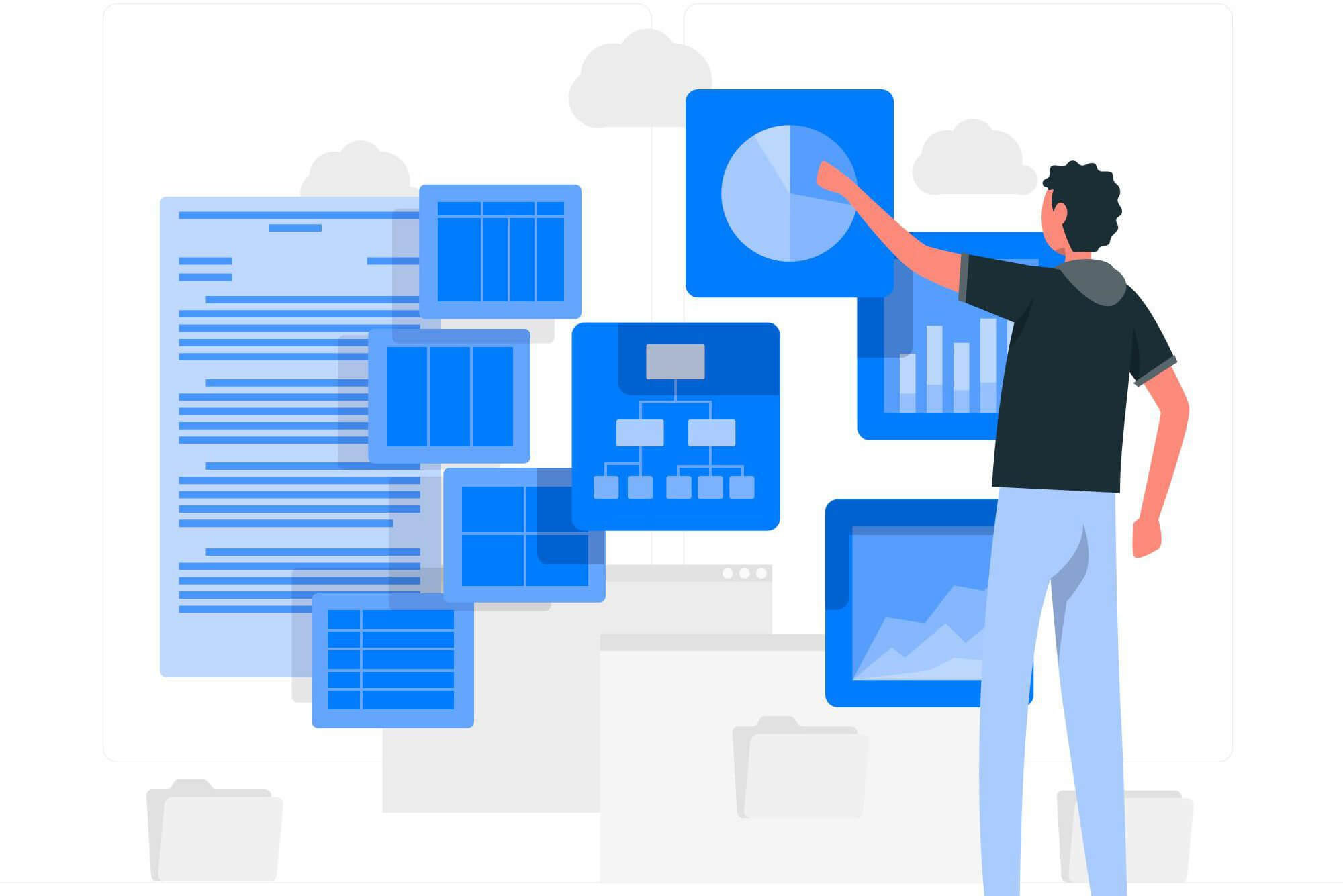Cyber Security Architecture And Its Purpose
Cybersecurity architecture is called network security architecture, and it comprises the formation of a computerized system that ensures the safety of a company’s confidential information. Cybersecurity architecture is an organization’s first line of defense against all security breaches and cyber threats.
In today’s fast-paced world, almost every field of work depends on the cyber system. To render the cyberinfrastructure safe, there is a dire need for a strong cyber security architecture.
The increasing cyber threats call for the best security controls to free the business security architecture from cyber attacks. Communication has switched to social media, making it vulnerable to cyber-attacks and external threats due to security breaches.
Cyber Security Architectural Framework
A cyber security architecture is based on a cyber security architectural framework. It serves as a blueprint for different computer network behaviors, including structural and functional modes of conduct, formation of policies, and setting standards. An ideal cyber security architectural framework constitutes network security and intrusion detection systems and ensures secure network communication protocols. In addition, it also lays the base of the network of computer systems.
This framework has a significant role in forming a strong security architecture, ensuring foolproof security policies contributing to risk management. The safe infrastructure will lead to fewer security breaches in the network connections, owing to effective security controls.
The cyber security architectural framework enables a company to recognize security threats and helps it design computer systems with security systems that have strong cybersecurity architecture. It will make the impact of security systems on the company’s business evident. An ideal cybersecurity architecture framework ensures that a company’s data remains confident, integrated, and available to the concerned individuals.
Here are a few reliable security architecture frameworks that are known as the security architecture key deliverables
Security Architecture’s Key Deliverables
The Open Group Architecture Framework (TOGAF)
It helps identify the issues a company must tackle using its security architecture. It, however, doesn’t propose any solution to those issues.
Sherwood Applied Business Security Architecture (SABSA)
This framework is based on substantial policies and assists the companies in framing the main purpose of a particular security architecture. It explains the roles of individuals, each individual’s job, the exact time of the function, and the reason behind every move. It ensures that the cybersecurity services are structured and brought into action according to the company’s goals as an essential component of its technology. It doesn’t, however, technically determine the method of application.
Open Security Architecture (OSA)
This framework is inclined towards the technical side of the cybersecurity system and its functioning. It defines the security problems, elements, and the basis of the decisions taken regarding cyber security architecture in detail. This framework can be used once the cybersecurity architecture is sketched out.
External And Internal Threat Management
External Threat Prevention
Firewalls, antivirus software, and cyber attack detection programs are some of the components of the cyber security framework that most companies acquire. Other software tools that serve this purpose include encryption tools providing end-to-end encryption, scanning web vulnerability, wireless tools for Defense of the Network, PKI services, and Penetration Testing services.
A comprehensive cybersecurity architecture utilizes these components in the company’s security policies and measures. The components mentioned, however, are not enough to tackle modern-day internal threats. They can only manage the external threat and needs to be aided with upgraded security architecture.
Internal Threat Prevention Via The Zero-Trust Security Model
To tackle internal threats, companies opt for a zero trust security model. The zero trust security framework enables a company to consistently validate, authenticate, and verify all the individuals accessing the company’s network systems. The zero trust security model is unbiased and requires scrutiny of all individuals, irrespective of employees and non-employees of the particular company.
This model was even implemented in the government bodies by the administration of President Biden, owing to the increasing number of cyber security threats.
The Biden administration’s particular standard used for government entities in May 2021 is called NIST. It is based on three basic postulates.
-
- Consistent Verification
Always verify access, all the time, for all resources.
-
- Limiting the effect of an external or internal security breach
Automation of data collection and prompt response.
- Incorporating Behavioral Information And Acquisition From The IT Network For A Timely Response
This security model helps the company implement security architecture by creating multiple security points on the premises of a network. This would ensure maximum cyber security, providing a smooth security architecture process.
Need For A Cyber Security Architect
Most organizations lack skilled professionals and raw materials in terms of technology to create network security architecture independently. Hiring a cyber security architect would be the best option in such circumstances. He would help the company identify internal and external cyber security threats and formulate a cybersecurity architecture to tackle security breaches. The cyber security architect would build the security architecture framework in the most professional manner enough to perform the task. This would strengthen the company’s network security systems.
Elements Of The Cyber Security Architecture
Despite having an ideal cyber security architecture, effective security controls can be implemented and made functional only by the cooperation of the employees of the company. A cybersecurity architect will provide the framework. However, for guaranteed implementation of security services, teamwork is required.
Work Force, Security strategies, and plan of action are the key elements for enforcing the security architecture’s key deliverables.
Work Force
It is the foremost duty of all the people working under the umbrella of your company to provide security coverage to the company’s data. They should serve the company with loyalty and play a major role in addressing cyber threats ensuring maximum cyber security.
Security Strategies
A security strategy includes policies determining how individuals within a company can reach others. It also sets limits on the functions each individual is allowed to perform. These policies will outline the safety boundaries to keep the system secure. It chalks out the plan B that needs to be applied in case of security breaches.
An ideal security strategy regarding the cybersecurity architecture would be understandable and practically applicable. It should clarify the reason behind each policy to the company’s employees so they know how a particular security policy must be implemented.
Plan Of Action
The compliance and consistency of implementing the cyber security strategies need well-trained staff. The employees can only benefit from the cyber security architecture if they know its uses, pros and cons, and application methods. The company must arrange meetings, seminars, and cyber security awareness programs to serve this purpose.
Key elements of the cybersecurity architecture further consist of cyber security frameworks that are known globally. The universal standards of cybersecurity architecture cannot be overlooked.
Universal Standards Of The Cybersecurity Architecture Plan
A company’s standards regarding cyber security can be set following the examples of the cyber security standards being followed globally by international organizations. For instance, the following are a few international standards in cyber security:
-
- Health Insurance Portability and Accountability Act (HIPAA).
- International Organization for Standardization ISO 27001.
- California Consumer Privacy Act (CCPA).
- The Payment Card Industry Data Security Standard (PCI DSS).
The type of standards that need to be followed by an organization depends solely upon the requirements of the company’s security architecture. So it is necessary to identify the company’s needs to fill the security loopholes effectively.
Cyber Security Frameworks In The World
The National Institute of Standards and Technology Cybersecurity Framework (NIST CSF)
It is one of the highly applicable cybersecurity architecture frameworks. Most organizations in the United States are utilizing it.
The NIST framework has five basic functions, including identifying the risks and security breaches, protecting the network section of cyber attacks, and prompt response and aggressive reaction to the malware being detected by the security systems. These functions have been broadly discussed here, but they have been further classified according to the security system requirements of the companies.
NIST Framework checks the companies’ cybersecurity architecture and highlights the security systems’ efficiency. It carries out detailed scrutiny of the business operations to make sure that the business processes are safe and secure online. It does so by verifying the current cybersecurity architecture of a particular company. The extent to which a cyber security architecture provides protection and the employees adhere to the cybersecurity standards is determined and measured by NIST.
Security Tools And Network Components
The following security tools and network components are essential for a cybersecurity architecture:
- Computer systems
- National Identity Cards
- Routers
- Switches
- Gateways,
- and modems are some of the components of Network Security.
Network protocols include TCP/IP, DNA, DHCP, HTTP, FTP, HTTPS, and IMA.
The hybrid combinations in a network between network nodes are due to the Network topologies such as point-to-point, chain, circular and hybrid.
Critical Phases Encountered By A Cybersecurity Architecture
The critical phases are as follows:
To assess the risks encountered by a cybersecurity architecture
This phase recognizes the vulnerability of a company’s critical data to external security breaches.
To create a foolproof safe environment
This phase includes creating an environment that securely supports the company’s ambitions and business targets.
Implementation of the security services
This phase includes utilizing all the security policies formed in the cybersecurity architecture framework according to the company’s requirements.
7 Critical Layers Of The Cybersecurity Architecture
The critical tools and elements have been mentioned earlier; however, we also need to know the 7 critical layers of cybersecurity architecture.
The following 7 filters are highly critical and essential to any cybersecurity program.
-
- Critical Asset Security
The data which needs to be protected at any cost comes under this category. It should ensure that such data is not vulnerable to cyber theft and security breaches. Data of people’s bank accounts, Medical records of patients in Hospitals, and National Identity databases are examples of such valuable information.
-
- Data Backup
End-to-end encryption and creating backup up to date is an integral part of the cybersecurity architecture. It helps in restoring any data lost by theft or by accident. All companies must have this critical storage method to prevent any loss and travel of data.
-
- Endpoint System Of Cybersecurity
This layer ensures that the employees’ devices are not reachable by external sources and are free from security breaches. It protects cell phones, laptops, and desktop computers according to the company’s requirements by the endpoint security system.
This security layer ensures that breaches do not exploit the endpoints of user devices. This includes the protection of mobile devices, desktops, and laptops.
-
- Cybersecurity Of Applications
This critical layer provides security to the applications and determines the extent to which an application can access the device’s location and other data.
-
- Security Of The Network Systems
This cybersecurity layer https://www.augmentt.com/wp-admin/admin.php?page=maxbuttons-controllerensures authorized individuals only access the cyber architecture and networks. Strong encryption techniques are applied to serve the purpose. This makes the company’s network safer than ever.
-
- Perimetric Cybersecurity
Such security protects the company from security breaches through physical and digital means.
- The Human Cybersecurity Layer
The chain of cybersecurity has various layers, as has been mentioned earlier; the last but not the least layer is that of humans. Humans themselves carry out the management of control systems and model threat formulation. This layer is not as strong; however, it is a core layer in the cybersecurity network.
Key Benefits Of The Cybersecurity Architecture
Having a reliable cybersecurity architecture would have the following beneficial results.
Financial Safety
Protecting the business from security breaches and cyber attacks would prevent huge financial losses due to the loss of essential company data secondary to cyber attacks.
External And Internal Protection
An ideal cybersecurity framework will produce a security architecture that not only tackles the external threats but also manages the internal ones.
Maintenance Of Confidentiality
Authorized individuals can only access important files and confidential information if a company has a good cybersecurity architecture. Only limited information is available to most of the users.
Smooth Completion Of Tasks
The risk of malware and security breaches is minimized due to a strong cybersecurity architecture that enables the company to achieve its ambitions and goals without any hurdles.
Management Of Risks
The cyber security architecture also forms the risk management strategies for the company. It thus helps in managing any risks as they come. This process goes on, and the risks are being managed continuously.
Frequently Asked Questions
What Is The Job Of A Security Architect?
A security architect is a professional qualified enough to build a strong cybersecurity architecture for a company. He comes up with all the necessary security policies and strategies for the company’s security systems.
What Can Be Referred To As An Example Of Cybersecurity Architecture?
Software protection, Security scans, and access controls are some examples of cyber security architecture.
What Are The 3 Major Types Of Cybersecurity?
The 3 major types of cybersecurity include Network security, cloud security, and internet of things security.
What Steps Should Be Followed To Create A Cybersecurity Architecture?
The following Five steps are involved in creating a cybersecurity architecture:
i. Making a list of the current security systems
ii. Making a threat simulation tool
iii. Prioritize the opportunities after identifying them
iv. Implement easy solutions
v. Scale
Conclusion
Now, let’s view the Cybersecurity architecture in a nutshell. A cybersecurity architecture provides a layout of the cybersecurity policies and strategies, which are to be followed and implemented by all company employees.






